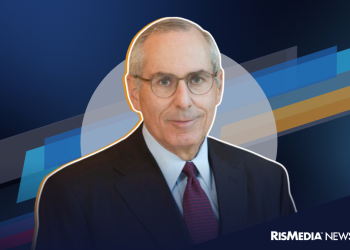The consumer price index (CPI) jumped 0.8% in November, according to a new report from the federal Bureau of Labor Statistics, pushing overall inflation to a nearly 40-year high at 6.8% as supply chain struggles and surging demand has sent the price of consumer goods spiraling upward.
So-called core inflation, which does not include more volatile food and energy prices, was up 0.5% in November, reaching 4.9% over the last 12 months. Much of the core inflation increase was driven by vehicle prices, with the cost of new vehicles rising 1.1% and used vehicles jumping 2.5% last month.
Energy costs overall rose 3.5%, less than the 4.8% increase seen in October but still pushing that sector to 33% higher over the last year. Gasoline moved up 6.1% in November—the same as the previous month and up nearly 60% from this time last year.
Food prices were up 0.7% in November after rising 0.9% in October, now 6.1% up annually.
Yesterday, Director of the National Economic Council Brian Deese said at a press conference that there has been some positive movement on inflation that is not reflected in these numbers. Most economists have continued to predict inflation will peak over the next few months before tapering off, though the Federal Reserve has indicated that it is more worried about the metric now than it was a few months ago.
According to Deese, gasoline prices actually fell about nine cents over the last couple weeks, and natural gas prices dropped 25% in November. Deese also claimed that used cars, pork and wheat have all come down recently, with those decreases not reflected in the most recent CPI report.
“Consensus estimates of outside experts continue to forecast and project that price increases will moderate going into 2022,” he said, adding that the Biden administration would “redouble our efforts” to address short and medium-term inflation.
Deese did not directly answer a question regarding whether “the wave is cresting” for inflation, instead pointing to a positive job market and the broader economic recovery.
National Association of REALTORS® Chief Economist Lawrence Yun said in a statement this morning that real estate remains a good investment during periods of high inflation while also acknowledging higher heating bills and the potential for mortgage rate increases.
“Even when interest rates soared in the 1980s and thereby crushed home sales, home prices still held up to consumer price inflation: 5.5% versus 5.6%,” Yun pointed out. “Other decades also show similar patterns. Therefore, for those concerned about the loss in purchasing power of money and savings, be assured that real estate has proven to be a good hedge against inflation.”
Inflation has remained a significant concern both among policymakers and the public at large, as people have seen significant cost increases at the gas pump, in the grocery store and in their energy bills. President Joe Biden has emphasized that the issue is a global problem but called it a “top priority” for his administration in a statement last month.
Fed chair Jerome Powell has said recently that several factors, including this high level of inflation and plummeting unemployment has pushed the central bank to consider accelerating its tapering of bond purchases, which were meant to prop up the broader economy during the pandemic.
Powell has also left open the possibility of raising interest rates, predicating that decision both on inflation and so-called “maximum employment,” though that metric can be difficult to define especially due to unprecedented shifts in the labor market.
Powell recently told the Senate Banking Committee at a hearing that inflation numbers would likely reach the bank’s metrics to precipitate an interest rate hike “in the coming months.” He has also indicated that the Fed will stop using the term “transitory” to refer to inflation, but claiming that decision is more based on disparate interpretations of the word rather than a shift in policy.
 Jesse Williams is RISMedia’s associate online editor. Email him your real estate news ideas to jwilliams@rismedia.com.
Jesse Williams is RISMedia’s associate online editor. Email him your real estate news ideas to jwilliams@rismedia.com.












